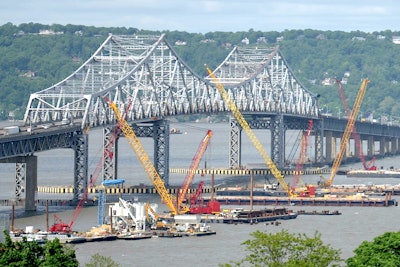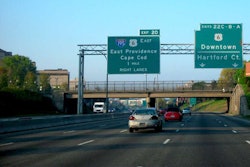 Construction progress on the new Tappan Zee Bridge on May 20, 2015.
Construction progress on the new Tappan Zee Bridge on May 20, 2015.The Government Accountability Office (GAO) shows in its recent study on bridge conditions across the country an overall improvement of bridge conditions since 2005. The agency released the study to the public Nov. 30.
The GAO examined data from the Federal Highway Administration’s National Bridge Inventory covering 2005 through 2014, and found the number of structurally deficient bridges decreased by 21 percent and functionally obsolete bridges dropped by 6 percent in that time. Bridge deck area considered structurally deficient lowered by 20 percent, but functionally obsolete deck area actually increased by 9 percent.
RELATED >> 2015 Better Roads Bridge Inventory
During this same period, the country added more than 15,000 bridges and roughly 400 million square feet of bridge deck area.
Looking at the 2014 data, the GAO says the total bridge count in the country is 610,749 (including private bridges) with 23 percent being on the National Highway System (NHS). NHS bridges account for 58 percent of the total bridge deck area in the U.S.
From 2005 to 2012, NHS bridge conditions improved, with structurally deficient structures decreasing by 20 percent and functionally obsolete bridges reducing by 2 percent. Functionally obsolete deck area increased by 6 percent.
Conditions for bridges owned by local and state agencies improved on a similar track, with structurally deficient bridges decreasing by 20 percent from 2005 to 2014. Functionally obsolete bridges dropped by 9 percent as well. Bridges owned by state groups saw a drop in structurally deficient counts by 24 percent and functionally obsolete bridges lowered 3 percent. But, deck area considered functionally obsolete increased by 12 percent.
For all bridges, GAO reports 10 percent are considered structurally deficient and 14 percent are labeled as functionally obsoleted. For NHS bridges, 17 percent are functionally obsolete, but only 4 percent are structurally deficient. Roughly half of all bridges and more than 90 percent of NHS bridges are owned by state agencies.
The full report, “Transportation Infrastructure: Information on Bridge Conditions,” is available here.









